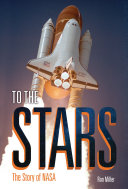2018 School Spending Survey Report
To the Stars: The Story of NASA
COPY ISBN
VERDICT Recommended for middle school or high school collections where in-depth NASA or STEM materials are in demand.
RELATED
ALREADY A SUBSCRIBER? LOG IN
We are currently offering this content for free. Sign up now to activate your personal profile, where you can save articles for future viewing





Be the first reader to comment.
Comment Policy:
Comment should not be empty !!!